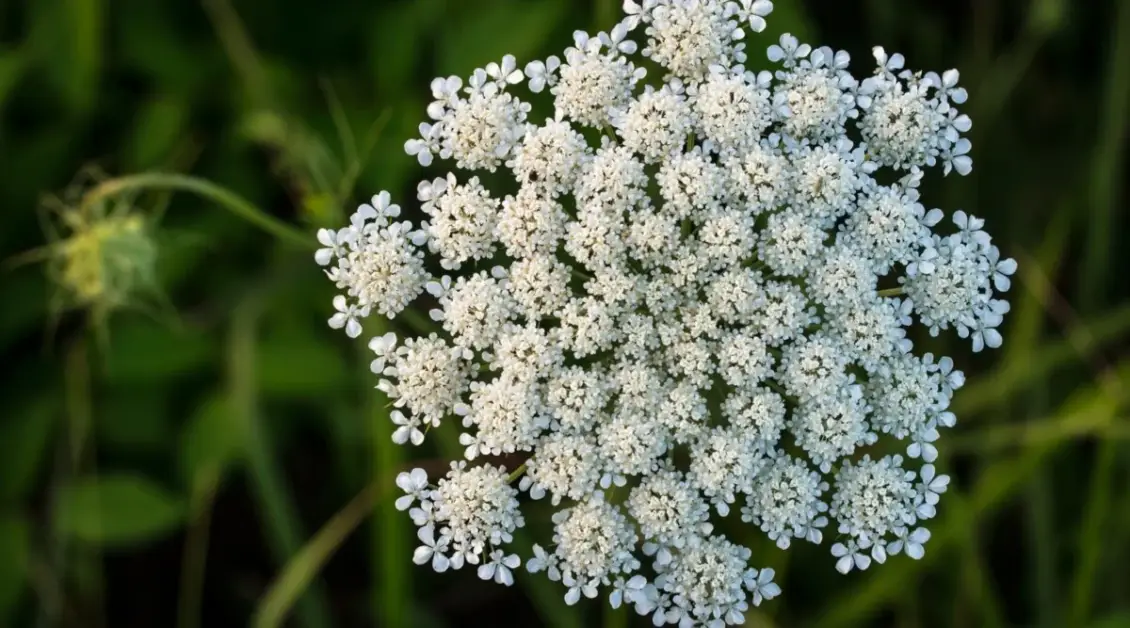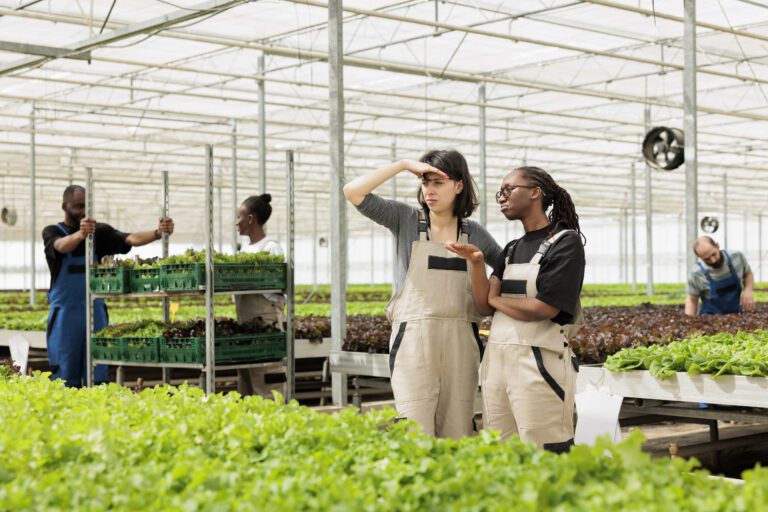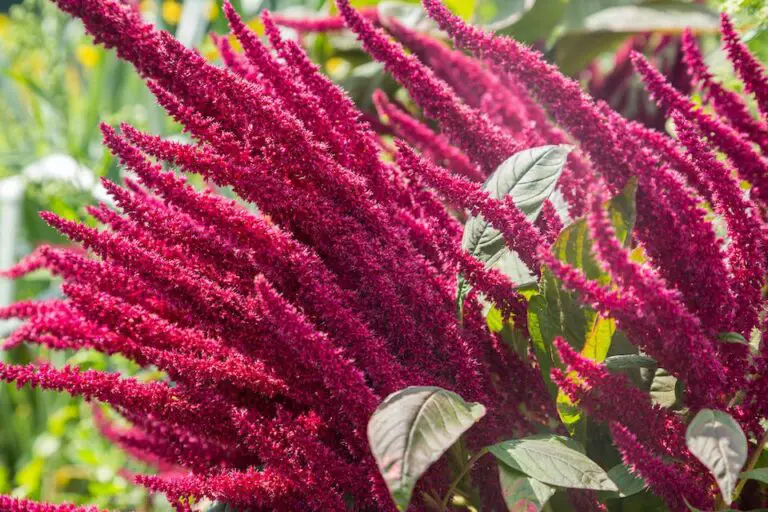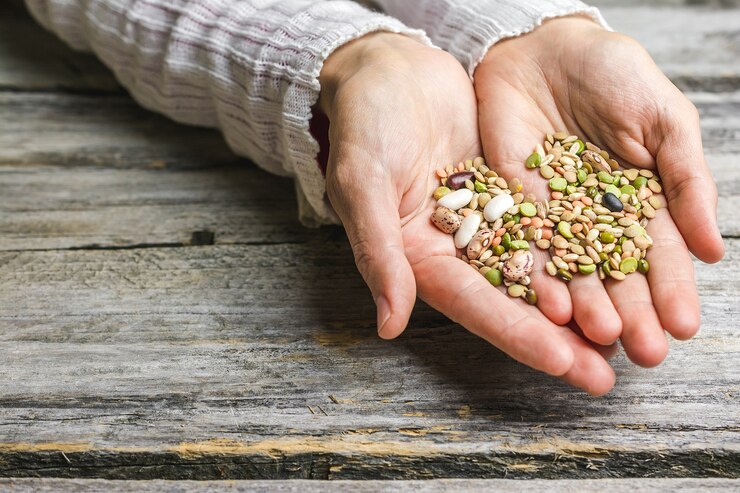Flowering Weeds: Identification and Pictures
Table of Contents
Understanding the Prevalence of Flowering Weeds
Flowering weeds are a common sight in gardens and landscapes, and understanding their prevalence is crucial for effective weed management. These plants, although often seen as nuisances, have adapted and thrived in various environments, making them prevalent in both urban and rural settings. The prevalence of flowering weeds can be attributed to several factors, including their ability to reproduce rapidly, adapt to different soil conditions, and compete with desired plants for resources.
One key reason for the prevalence of flowering weeds is their reproductive efficiency. Many weed species produce copious amounts of seeds, ensuring their continued existence and spread. These seeds can be dispersed through various means such as wind, water, or by adhering to animals or human clothing. As a result, even a single flowering weed can produce a vast number of seeds, leading to the rapid colonization of an area if left unchecked.

Additionally, flowering weeds have evolved to thrive in a wide range of soil conditions. They can adapt to poor-quality soils or survive in disturbed areas where competition from other plants is minimal. This adaptive capability allows them to establish themselves in both urban and rural environments, posing challenges to gardeners, farmers, and land managers alike.
Understanding the prevalence of flowering weeds sets the foundation for effective weed control strategies. By recognizing the factors that contribute to their spread, we can develop targeted approaches to minimize their impact and preserve the health and aesthetics of our gardens and landscapes.
The Importance of Identifying Flowering Weeds
Identifying flowering weeds may seem like an insignificant task in the grand scheme of gardening, but it holds much more importance than meets the eye. Flowering weeds can have a significant impact on the health and functionality of our gardens and landscapes. They compete with desirable plants for nutrients, sunlight, and water, ultimately hindering their growth and development. By identifying these intruders, gardeners can take proactive measures to control and manage their presence effectively.
One of the primary reasons for identifying flowering weeds is to prevent them from spreading and causing further damage. These resilient plants have a remarkable ability to reproduce and disperse their seeds, rapidly colonizing new areas and overpowering native species. Without proper identification, it becomes challenging to implement appropriate measures to halt their spread. By promptly recognizing flowering weeds, gardeners can target their removal efforts, ensuring that they do not invade and dominate other parts of the garden. Moreover, identifying flowering weeds early on allows gardeners to employ less invasive and more environmentally friendly control methods, reducing the need for harsh chemicals and promoting ecological balance.
Environmental Impact of Flowering Weeds
Flowering weeds are not just a nuisance in our gardens and landscapes; they can also have a significant environmental impact. These unwanted plants have the ability to outcompete native species, disrupt ecosystems, and alter biodiversity. The rapid growth and spread of flowering weeds can lead to a decrease in the abundance and diversity of native flora and fauna, as they consume valuable resources such as sunlight, water, and nutrients.
Furthermore, flowering weeds can also have a negative impact on water bodies and aquatic ecosystems. When carried by wind or rain, their seeds can be transported to nearby rivers, lakes, or streams, where they can take root and thrive. This can result in the clogging of waterways, an increase in sedimentation, and a reduction in water quality. Additionally, some species of flowering weeds have the ability to produce chemicals that can be toxic to aquatic organisms, further disrupting the delicate balance of these habitats.
| Environmental Impact | Description |
|---|---|
| Biodiversity Loss | Flowering weeds can outcompete native plants, reducing biodiversity in ecosystems. They may also crowd out native plant species, leading to habitat loss for wildlife. |
| Soil Degradation | Some flowering weeds have deep root systems that can degrade soil structure and decrease soil fertility over time. This can result in erosion and loss of soil nutrients. |
| Water Consumption | Flowering weeds may consume significant amounts of water, competing with other plants and potentially leading to water shortages in ecosystems, especially in arid regions. |
| Disruption of Ecosystem Function | Invasive flowering weeds can disrupt ecosystem processes such as nutrient cycling and pollination, leading to imbalances in the ecosystem and negatively impacting other plant and animal species. |
| Pest Habitat | Flowering weeds can provide habitat for pests such as insects and rodents, which may then become agricultural or urban pests, causing further ecological and economic damage. |
| Allergies and Health Risks | Some flowering weeds produce pollen that can trigger allergies in humans, leading to respiratory problems and other health issues. Additionally, certain weeds may be toxic to humans and animals if ingested. |
It is therefore crucial to understand and address the environmental impact of flowering weeds. By recognizing the potential harm they can cause and implementing appropriate control measures, we can help preserve the health and integrity of our ecosystems. In the following sections, we will explore the factors influencing the growth of flowering weeds, common types of flowering weeds in different regions, and techniques for effective flowering weed control. Stay tuned to learn more about how we can protect our environment from the negative effects of these invasive plants.
Factors Influencing the Growth of Flowering Weeds
Factors Influencing the Growth of Flowering Weeds
The growth of flowering weeds is influenced by a variety of factors, ranging from environmental conditions to human activities. One of the key factors is the availability of sunlight. Flowering weeds, like other plants, require sunlight for photosynthesis, the process through which they convert light into energy. Therefore, the amount of sunlight that a specific area receives directly impacts the growth and proliferation of flowering weeds. Areas with ample sunlight are likely to have a higher density of flowering weeds compared to shaded or partially shaded regions.
Another crucial factor that influences the growth of flowering weeds is the availability of nutrients in the soil. Just like any other plant, flowering weeds require essential nutrients such as nitrogen, phosphorus, and potassium to support their growth and development. The presence or absence of these nutrients in the soil can greatly affect the growth rate and overall health of flowering weeds. Nutrient-rich soils tend to promote vigorous growth, whereas nutrient-poor soils may hinder the growth and survival of flowering weeds. Additionally, the pH level of the soil can also have an impact on the growth of these weeds, as some species thrive in acidic conditions while others prefer alkaline soils.
Furthermore, water availability plays a significant role in determining the growth of flowering weeds. Adequate moisture in the soil is essential for germination, root development, and overall plant health. Flowering weeds have different water requirements, and their growth can be significantly affected by either water scarcity or excessive irrigation. Additionally, the presence of standing water or poor drainage in an area can create favorable conditions for the growth of certain flowering weed species that thrive in wet environments.

In conclusion, several factors influence the growth of flowering weeds, including sunlight availability, nutrient content in the soil, and water availability. These factors interact with one another to create specific conditions that favor the growth and proliferation of these plants. By understanding these factors, gardeners and landowners can better manage and control the growth of flowering weeds, ensuring a healthier and more aesthetically pleasing landscape.
Common Types of Flowering Weeds in Different Regions
When it comes to flowering weeds, there are a wide variety of species that can be found in different regions. Each type of weed has its own unique characteristics and growth habits, which can vary depending on the climate, soil conditions, and other environmental factors.
One common type of flowering weed that is found in many regions is the dandelion (Taraxacum officinale). This weed is easily recognizable by its bright yellow flowers and puffy seed heads that can be dispersed by the wind. Dandelions are known for their ability to quickly spread and take over lawns and gardens, making them a common nuisance for homeowners.
| Region | Common Types of Flowering Weeds |
|---|---|
| North America | Dandelion (Taraxacum officinale), Canada Thistle (Cirsium arvense), Common Chickweed (Stellaria media), Common Purslane (Portulaca oleracea) |
| Europe | Common Nettle (Urtica dioica), Creeping Thistle (Cirsium arvense), Common Ragweed (Ambrosia artemisiifolia), Field Bindweed (Convolvulus arvensis) |
| Australia | Paterson’s Curse (Echium plantagineum), Cape Tulip (Homeria spp.), Fleabane (Conyza spp.), Horehound (Marrubium vulgare) |
| Asia | Japanese Knotweed (Reynoutria japonica), Oxalis (Oxalis spp.), Common Mallow (Malva spp.), Purslane (Portulaca oleracea) |
| Africa | African Rue (Peganum harmala), Black Jack (Bidens pilosa), Wild Radish (Raphanus raphanistrum), Prickly Lettuce (Lactuca serriola) |
Another commonly found flowering weed is the common chickweed (Stellaria media). This weed has small, white flowers and grows low to the ground, forming dense patches in lawns and garden beds. Chickweed is able to thrive in a wide range of conditions and is known to be a prolific seed producer, which makes it difficult to control once it becomes established.
Other types of flowering weeds that can be found in different regions include plantain (Plantago spp.), purslane (Portulaca oleracea), and clover (Trifolium spp.). Each of these weeds has its own unique characteristics and can pose different challenges for gardeners and landscapers. Understanding the common types of flowering weeds in your region can help you develop effective strategies for weed control and prevention.
Identifying Flowering Weeds through Visual Characteristics
Visual characteristics play a crucial role in identifying flowering weeds in your garden or landscape. By observing the physical attributes of the plants, you can gain valuable insights into their identity and take appropriate measures to manage them effectively.
One of the key visual characteristics to consider when identifying flowering weeds is the structure of their flowers. Pay attention to the shape, color, and arrangement of the petals, as well as the presence or absence of any unique features like spurs or spots. This information can help you narrow down the possibilities and distinguish flowering weeds from desirable plants.
Additionally, the arrangement and shape of leaves can offer important clues in identifying flowering weeds. Look closely at the arrangement of leaves along the stem – are they opposite each other or alternate? Are the leaves simple or compound, lobed or serrated? Taking note of these features can help you narrow down the list of potential culprits and aid in accurate identification.
Remember, visual characteristics alone may not always provide a definitive identification of flowering weeds. It is advisable to consult reputable field guides, gardening references, or seek expert advice to ensure accurate identification and appropriate management strategies. Armed with this knowledge, you can effectively tackle the presence of flowering weeds in your garden and maintain a healthy and vibrant outdoor space.
Recognizing Flowering Weeds by Their Leaves and Stems
Recognizing flowering weeds by their leaves and stems is an essential skill for any gardener or enthusiast who wants to maintain a healthy and aesthetically pleasing garden. The characteristics of leaves and stems can provide valuable clues regarding the identity and growth patterns of various flowering weeds.
When it comes to leaves, one of the key factors to observe is their shape. Different flowering weeds have distinct leaf shapes, ranging from simple to compound, lobed to toothed, and linear to oval. Additionally, the arrangement of leaves on the stem can vary, with some weeds exhibiting opposite leaf arrangement, while others have alternate or whorled patterns.
Stems also offer valuable information for identifying flowering weeds. Examining the stem’s overall appearance, color, and texture can provide clues about the weed’s growth habit and maturity. Some weeds may have smooth and slender stems, while others may display ridges, hairs, or spines. Understanding the stem’s structure and branching pattern can further assist in determining the type of flowering weed present in your garden.
By closely examining the leaves and stems of flowering weeds, gardeners can take appropriate measures to control and manage these invasive species effectively. With a keen eye and knowledge of the various characteristics, one can ensure that their garden remains free from these unwanted intruders, promoting the growth of desired plants and maintaining a thriving and beautiful outdoor space.
Seasonal Variations in Flowering Weeds
Seasonal variations play a significant role in the life cycle of flowering weeds. As the seasons change, so do the conditions that affect the growth and blooming of these plants. Understanding these variations can help gardeners and landscapers better manage and control the presence of flowering weeds in their outdoor spaces.
In spring, flowering weeds start to emerge as the temperatures rise and daylight hours increase. This is a crucial time for gardeners to be vigilant, as many common weeds, such as dandelions and chickweed, begin to flower and produce seeds during this season. Without proper management, these weeds can quickly spread and take over gardens and lawns, crowding out desirable plants.
During the summer months, the heat and longer days provide an optimal environment for the growth of flowering weeds. Weeds like crabgrass and purslane thrive in these conditions, utilizing available resources to compete with cultivated plants for space, nutrients, and water. It is crucial for gardeners to implement effective weed control measures during this time to prevent the overgrowth of these pesky plants.
The shift to autumn brings a change in the flowering weed landscape. As temperatures cool and daylight hours decrease, some weeds may begin to wither and die. However, other weeds, such as thistles and ragweed, thrive in this season and produce copious amounts of seeds for future growth. It is important to take preemptive measures to prevent the spread of these weeds, as they can be challenging to control once established.
Winter presents its own unique challenges when it comes to seasonal variations in flowering weeds. While many weeds lay dormant during this time, some species, like the winter annuals, continue to grow and flower. These cold-tolerant weeds, such as henbit and chickweed, can become problematic, especially in milder regions. Gardeners should be observant and take action to control these winter weeds before they have a chance to spread and become a nuisance in the upcoming spring.
Understanding the seasonal variations in flowering weeds is crucial for effective weed management and control. By recognizing the lifecycle and growth patterns of these plants throughout the year, gardeners can adopt appropriate strategies to prevent their spread and maintain the health and beauty of their outdoor spaces.
Potential Risks Associated with Flowering Weeds
Flowering weeds, although often overlooked, can pose potential risks to both natural environments and cultivated landscapes. One of the main concerns associated with these invasive plants is their ability to compete with native species for resources such as nutrients, sunlight, and water. This can lead to a disruption in the ecological balance of an area, as flowering weeds can quickly dominate and overtake native flora.
In addition to ecological concerns, flowering weeds can also have negative impacts on agriculture. They can compete with crops for resources, reducing yields and affecting overall productivity. Some flowering weeds can even serve as hosts for pests and diseases, further exacerbating the challenges faced by farmers and gardeners. To minimize these risks, it is crucial to identify and control flowering weeds effectively, using appropriate management techniques and preventative measures.
The Role of Flowering Weeds in Ecosystems
Flowering weeds, although often deemed as unwanted intruders in gardens, play a crucial role in ecosystems. These resilient plants contribute to the overall health and balance of natural habitats. By providing food and shelter for insects, birds, and other wildlife, flowering weeds support the intricate webs of life that exist within ecosystems.
In terms of pollination, flowering weeds serve as vital resources for bees and other pollinators. These plants offer nectar and pollen, sustaining the survival of these important species. Without flowering weeds, the risk of pollinator decline would be even more pronounced, leading to potential disruptions in food production and overall ecosystem stability.
Furthermore, flowering weeds contribute to the enrichment of soil health. As they grow and eventually decompose, their organic matter replenishes vital nutrients, enhances soil structure, and promotes moisture retention. This not only benefits the surrounding vegetation but also aids in soil erosion prevention, especially in areas prone to erosion.
The role of flowering weeds in ecosystems goes beyond mere aesthetic value. These resilient plants work hand in hand with other organisms to maintain biodiversity, promote pollination, and support overall ecological balance. Understanding their importance is essential in recognizing the intricate relationships that shape the natural world we admire and seek to protect.
Flowering Weeds and Their Impact on Agriculture
Flowering weeds can have a significant impact on agriculture, posing numerous challenges for farmers and gardeners alike. These invasive plants compete with crops for resources such as nutrients, water, and sunlight, thereby reducing crop yields. They also serve as hosts for pests and diseases, which can further threaten the health and productivity of agricultural systems.
The presence of flowering weeds in agricultural fields can hinder management efforts and increase production costs. Farmers have to invest additional time, money, and resources to control and suppress these unwanted plants. This includes employing various weed management strategies like tillage, herbicide application, and crop rotation to mitigate the negative effects of flowering weeds on agricultural productivity.
In addition to the direct impact on crop yields and management practices, flowering weeds can also have indirect consequences on agroecosystems. They can alter the biodiversity and composition of plant communities, potentially leading to imbalances in ecological processes and interactions. Furthermore, the spread of flowering weeds from agricultural fields to adjacent natural habitats can disrupt native plant communities and threaten the integrity of ecosystems.

Given the detrimental impact of flowering weeds on agriculture, it is crucial for farmers and gardeners to implement effective weed control measures. By understanding the biology, ecology, and management techniques associated with these invasive plants, agricultural practitioners can devise comprehensive strategies to minimize the harm caused by flowering weeds and maintain the health and productivity of their fields.
Controlling and Managing Flowering Weeds
Controlling and managing flowering weeds in your garden is essential to maintain the health and vitality of your plants. These pesky invaders not only compete with your desired plants for sunlight, water, and nutrients but can also harbor pests and diseases. To effectively tackle this issue, it is important to adopt a comprehensive approach that combines both preventive measures and targeted removal techniques.
One of the most effective methods of controlling flowering weeds is through regular cultivation and mulching. Cultivating the soil disrupts the growth cycle of weeds by uprooting them and exposing their roots to the drying effects of air and sunlight. Mulching, on the other hand, acts as a protective barrier that prevents weed seeds from germinating and inhibits their access to sunlight. Organic mulches such as straw, wood chips, or shredded leaves not only suppress weed growth but also improve soil health over time.
In addition to cultivation and mulching, employing herbicides can be an efficient way to manage flowering weeds in your garden. However, it is crucial to use herbicides judiciously and according to the manufacturer’s instructions to avoid any potential harm to your desired plants and the environment. Selective herbicides that specifically target broadleaf weeds while sparing grasses can be particularly useful. Always remember to protect yourself with gloves, goggles, and appropriate clothing when applying herbicides and avoid using them on windy days to prevent unintended damage to nearby plants.
By taking a proactive approach and combining various control methods, you can effectively manage flowering weeds in your garden and create a thriving and picturesque landscape. Stay vigilant, monitor your garden regularly, and swiftly address any emerging weed problems to maintain the beauty and productivity of your green oasis. Remember, a well-tended garden is not just aesthetically pleasing, but it also provides a nurturing environment for your plants to flourish.
Techniques for Effective Flowering Weed Removal
Flowering weeds can be a persistent problem in any garden or landscape, but with the right techniques, effective removal is possible. One method is hand-pulling, which involves manually uprooting the weeds from the soil. This technique is best suited for small infestations or delicate plants that may be affected by herbicides. When hand-pulling, it is important to remove the entire root system to prevent regrowth. For larger areas or more robust weeds, mechanical removal using tools such as hoes or weed eaters can be effective.
Another approach to flowering weed removal is the use of herbicides. Non-selective herbicides, like glyphosate, kill all plants that they come into contact with, making them useful for treating large areas overrun with various weed species. Selective herbicides, on the other hand, target specific types of weeds while sparing desired plants, providing a more targeted approach. However, it is important to carefully read and follow the instructions on the herbicide label to ensure safe and effective use. Always take precautions to protect yourself, other plants, and the environment when using herbicides.
By combining these techniques and adapting them to suit the specific needs of your garden or landscape, you can effectively remove flowering weeds and create a healthier and more visually appealing environment. Regular monitoring and maintenance are crucial to preventing weed regrowth and ensuring long-term success. Stay tuned for more techniques and tips on handling various types of flowering weeds in our upcoming articles.
Natural Remedies for Controlling Flowering Weeds
Natural remedies can be an effective and environmentally friendly way to control flowering weeds in your garden. One popular method is hand-pulling, which involves manually removing the weeds from the ground. This can be done by grasping the stem as close to the base as possible and gently pulling upwards. However, it’s important to ensure that the entire root system is removed to prevent regrowth. Regular monitoring and prompt removal of any new weeds can also help prevent the spread and establishment of flowering weeds in your garden.
Another natural remedy for controlling flowering weeds is mulching. Mulching involves covering the soil around plants with a layer of organic material such as straw, wood chips, or bark. Not only does this help to suppress weed growth by blocking out sunlight, but it also helps to retain moisture in the soil and improve the overall health of your plants. It is recommended to apply a thick layer of mulch, around 2-3 inches deep, while ensuring that it is not in direct contact with the stems or trunks of your plants. Regularly replenishing the mulch as it decomposes will provide ongoing weed control benefits.
Preventing the Spread of Flowering Weeds in Your Garden
Maintaining a beautiful and thriving garden requires constant attention and care. One crucial aspect of garden maintenance is preventing the spread of flowering weeds. These opportunistic plants can quickly take over your carefully cultivated flowerbeds, robbing the soil of nutrients and competing with your desired plants for sunlight and water.
To effectively prevent the spread of flowering weeds in your garden, it is crucial to adopt proactive measures. Regular weeding is the first line of defense against these invasive plants. By regularly inspecting your garden and removing any flowering weeds as soon as they appear, you can prevent them from producing and dispersing their seeds. Pulling out the entire plant, including the roots, is essential to prevent regrowth.
A critical aspect of weed prevention is to minimize disturbed soil areas in your garden. Flowering weeds often take advantage of bare patches, where they can easily establish themselves. By covering the soil with thick mulch or groundcover plants, you not only discourage the growth of flowering weeds but also help retain soil moisture and prevent erosion.
Another effective strategy to prevent the spread of flowering weeds is to practice proper garden sanitation. Removing any plant debris, dead flowers, or weed seeds from the garden can significantly reduce the chances of new weed growth. Regularly clean your tools and equipment, as they can inadvertently transfer weed seeds from one area to another.
Furthermore, being mindful of the plants you introduce to your garden can also contribute to weed prevention. Buy plants from reputable nurseries, as they tend to have better-quality specimens that are less likely to carry weed seeds. Before planting, thoroughly inspect the roots and foliage of any new additions to ensure they are free from any potential weed contaminants.
By implementing these preventive measures, you can significantly reduce the spread of flowering weeds in your garden. Not only will this help keep the aesthetics of your garden intact, but it will also ensure the health and vitality of your desired plants, allowing them to flourish without the competition and interference from these persistent intruders. So, devote some time to weed prevention, and enjoy a garden that truly reflects your hard work and dedication.
Appreciating the Beauty of Wildflowers among Flowering Weeds
Wildflowers are a delightful and enchanting sight amidst a sea of flowering weeds. While many gardeners may view weeds as a nuisance, it is important to recognize the beauty that wildflowers bring to our landscapes. These delicate blooms not only add a pop of color but also play a crucial role in supporting biodiversity and pollinators.
One cannot help but be captivated by the vivid hues and intricate patterns showcased by wildflowers. From the vibrant orange of California poppies to the soft purple of lavender, these blossoms create stunning visual displays that can transform any garden into a picturesque haven. Moreover, their delicate fragrances can fill the air with a pleasant scent that attracts not only humans but also a variety of beneficial insects.
Beyond their aesthetic appeal, wildflowers serve as vital sources of food and shelter for a diverse range of wildlife. Bees, butterflies, and other pollinators rely on the nectar and pollen provided by these plants, playing a vital role in the reproduction of numerous flowering species. The presence of wildflowers also attracts birds, providing them with seeds and insects as part of their diet. By appreciating the beauty of wildflowers among flowering weeds, gardeners can create habitats that support a rich and vibrant ecosystem.
What are some native wildflowers that can be found among flowering weeds?
Some native wildflowers that can be found among flowering weeds include bluebonnets, California poppies, black-eyed Susans, and Indian paintbrush.
How can flowering weeds impact agriculture?
Flowering weeds can compete with crops for resources such as water, nutrients, and sunlight, potentially reducing crop yields. They can also harbor pests and diseases that can affect crop health.
What are some natural remedies for controlling flowering weeds?
Some natural remedies for controlling flowering weeds include manual removal, mulching, and using vinegar or boiling water to kill weeds. Certain plants, such as clover or ground cover, can also be used to suppress weed growth.
How can I prevent the spread of flowering weeds in my garden?
To prevent the spread of flowering weeds in your garden, regularly remove any weeds before they go to seed. Implementing proper mulching and using weed barriers can also help prevent weed growth.
How do flowering weeds contribute to ecosystems?
Flowering weeds provide food and habitat for various insects, birds, and other wildlife. They also play a role in soil stabilization and nutrient cycling.
What are some common types of flowering weeds found in different regions?
Common types of flowering weeds can vary depending on the region, but some examples include dandelions, crabgrass, thistles, and purslane.
Are there any potential risks associated with flowering weeds?
Some flowering weeds can be poisonous to humans or animals if ingested. It is important to be cautious and educate oneself about the specific risks associated with certain flowering weeds.
How can I effectively remove flowering weeds from my garden?
Techniques for effective flowering weed removal include using hand tools like a trowel or hoe to dig up the roots, pulling weeds by hand, or using herbicides specifically designed for weed control.
What are the visual characteristics that can help identify flowering weeds?
Visual characteristics that can help identify flowering weeds include the color and shape of their flowers, the arrangement of leaves, and the overall growth habit of the plant.
How do seasonal variations affect flowering weeds?
Seasonal variations can affect the growth and appearance of flowering weeds. Some weeds may be more prevalent during certain seasons or may exhibit different stages of growth throughout the year.

Pallavi Gupta is a burgeoning writer at SouthElMonteHydroponics, blending her passion for data analysis with a keen interest in biotechnology. Currently pursuing a Bachelor’s in Biotechnology at Amity University, Pallavi delves into the intricacies of life sciences while gaining hands-on experience in the exciting world of data analysis. Her unique background provides a fresh perspective on hydroponic farming, as she explores the intersection of biotechnology and sustainable agriculture. Through her writing, Pallavi aims to bridge the gap between data-driven insights and innovative farming practices, inspiring others to harness technology for a greener future.






